Abstract
The technique of spin trapping has been applied to the gas phase of cigarette smoke to identify and quantify the radicals present. It was found that radicals could be trapped only if the smoke was filtered. Three spin traps were used: N-tert-butyl-alpha-phenyl nitrone (PBN). 5,5-dimethyl-delta1-pyrroline-1-oxide (DMPO) and alpha-[3,5-di-tert-butyl-4-hydroxyphenyl)-N-tert-butyl nitrone (OHPBN). From the electron spin resonance (ESR) splitting constants of the radicals produced by the reaction of smoke radicals with the spin traps and also from the effec of varying the path length between the cigarette and the spin trap solution, it is concluded that three types of signals are observed. Type I signals indicate the presence of oxygenated radicals which appear to be a mixture of alkoxy radicals (RO) and aroyloxy (ArCO2-) radicals. Our data do not allow conclusions about the nature of the R or Ar groups in these two oxy radicals; however, considerations based on lifetimes suggest that the R group probably is tertiary. Type II and III signals are not typical spectra of spin adducts. Instead, we believe they result from reaction of smoke (and probably radicals in smoke) with the PBN spin trap and indicate that smoke has the ability to effect one-electron oxidations. Only type I signals are observed with DMPO and OHPBN. A quantitative study shows that 4 x 10(14) spins/puff are present in the smoke, in contrast with the result of a recent study which used a very different method for determining the radical content of smoke. A discussion of the nature of the radicals in smoke and some tentative conclusions are presented.
Full text
PDF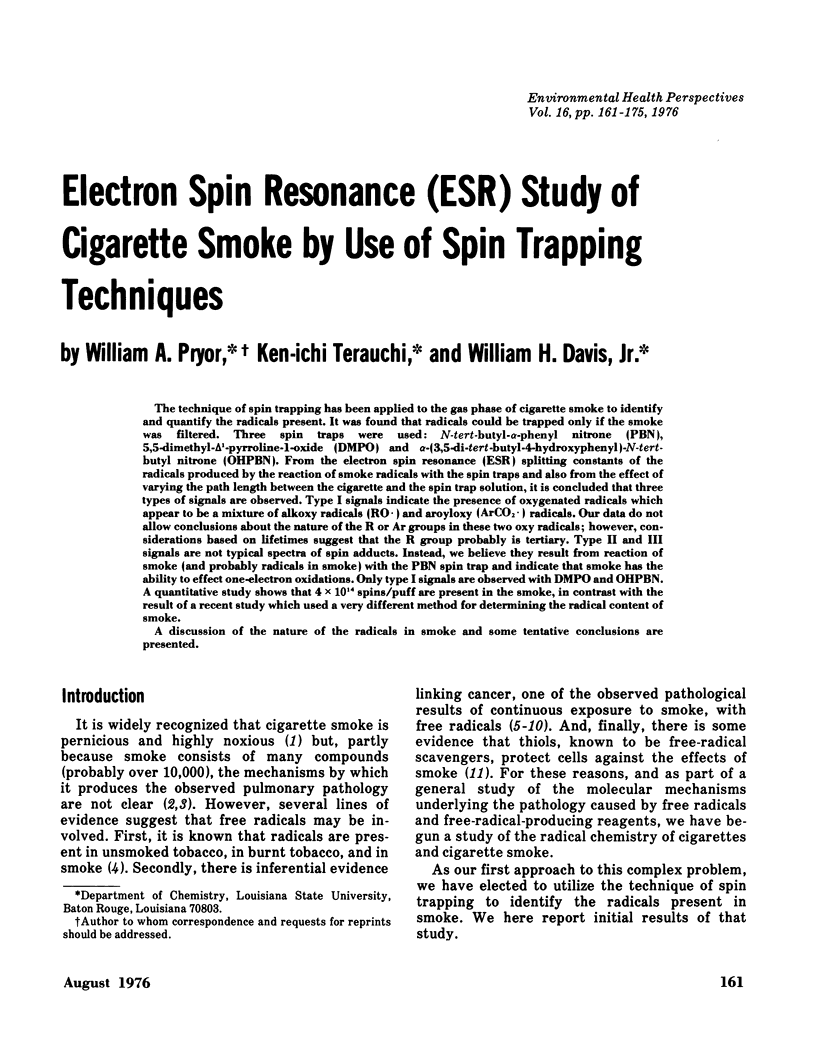
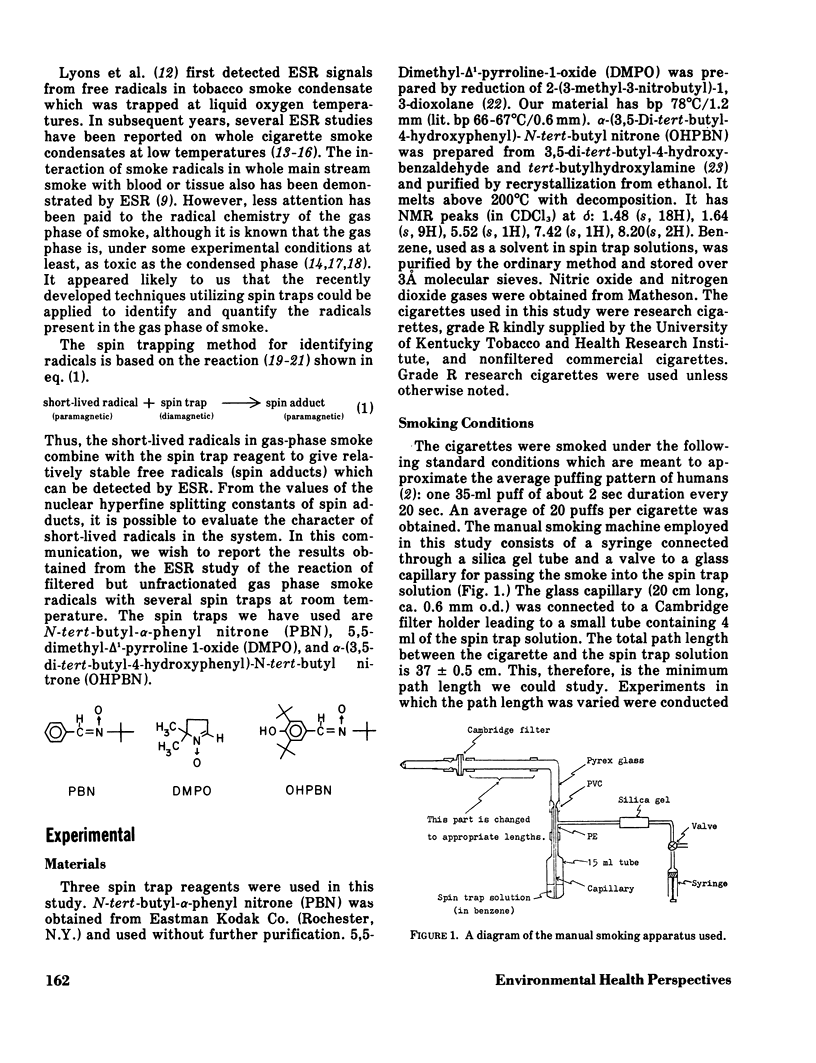
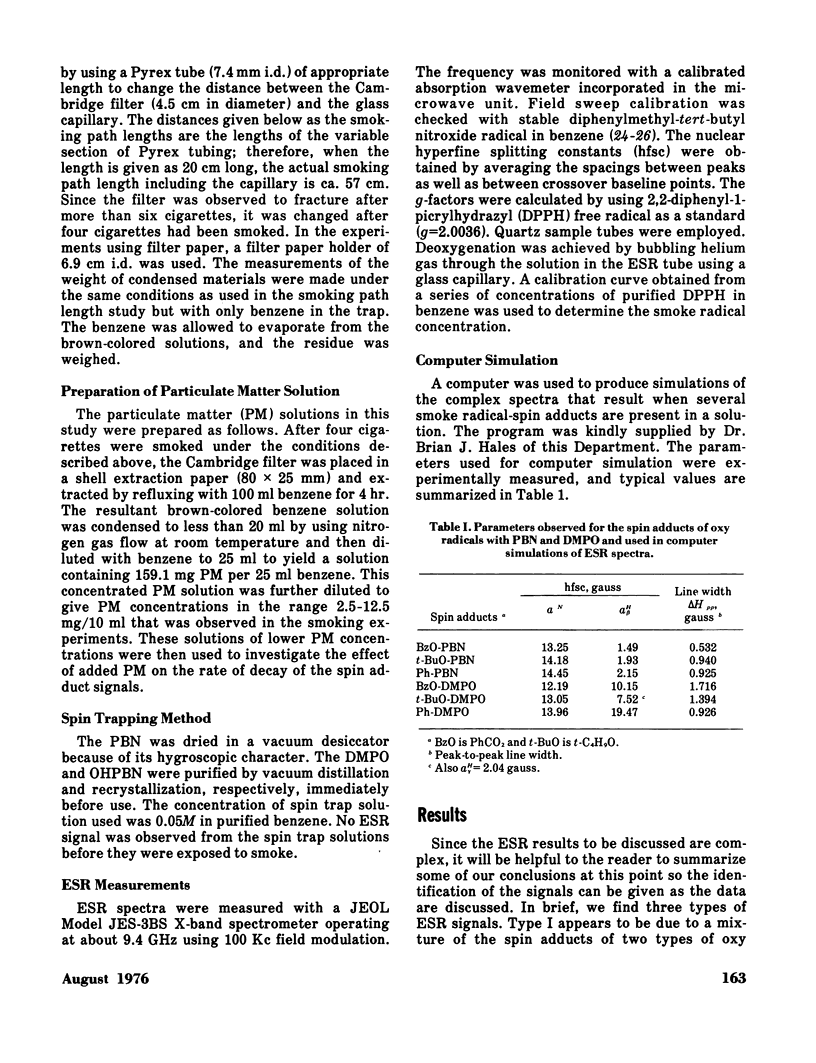
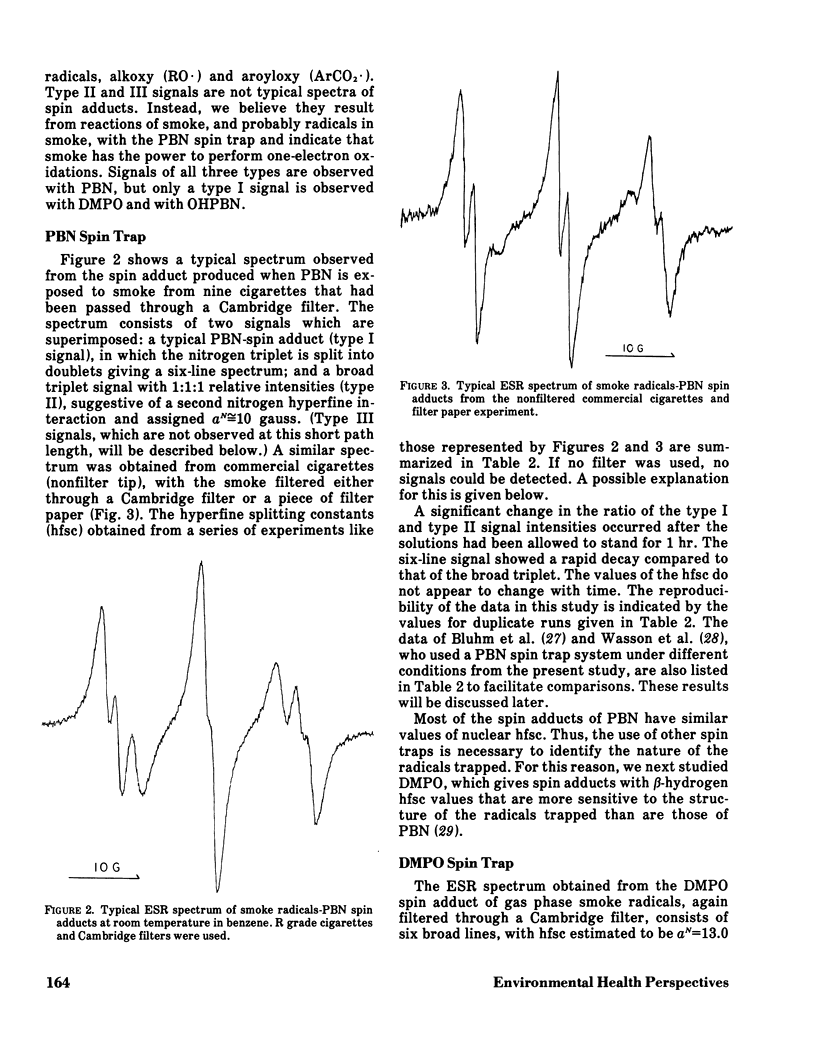
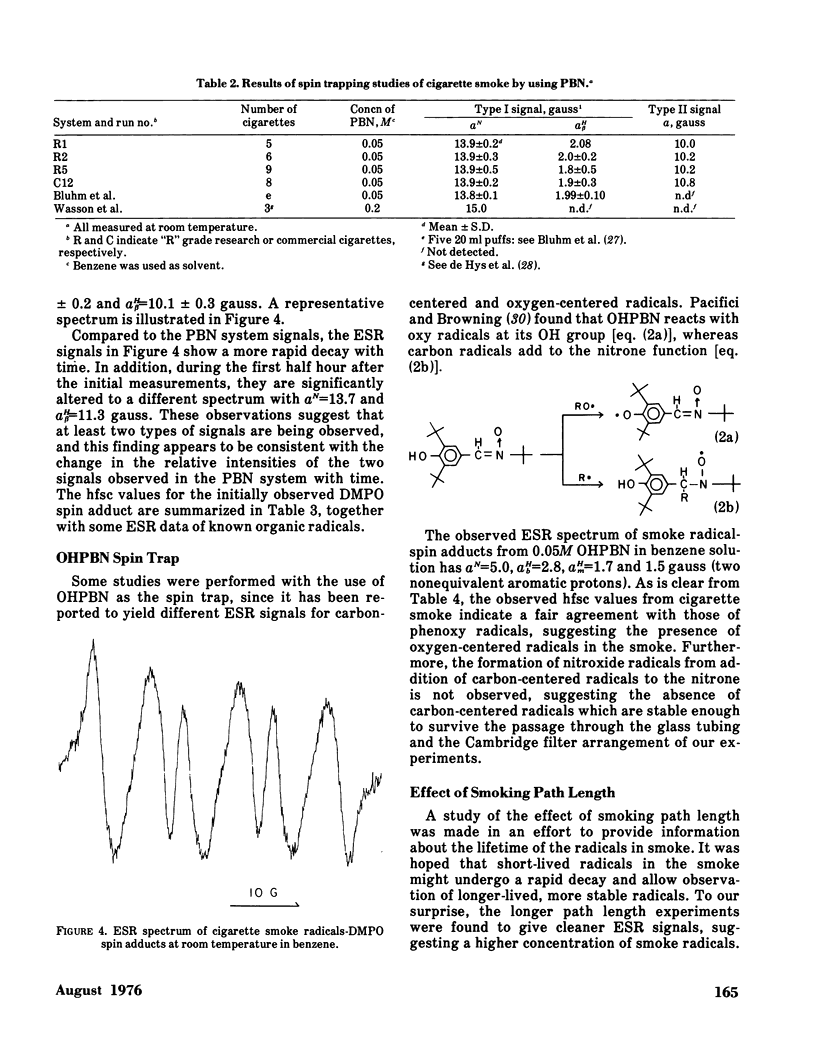
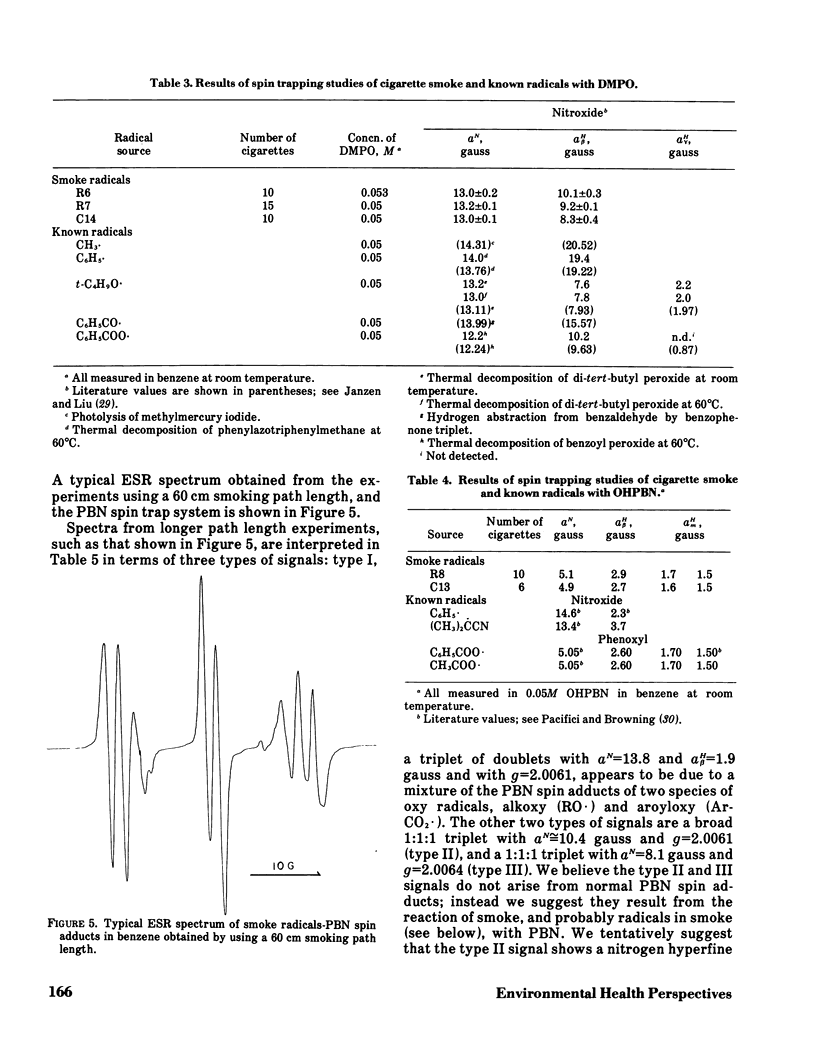
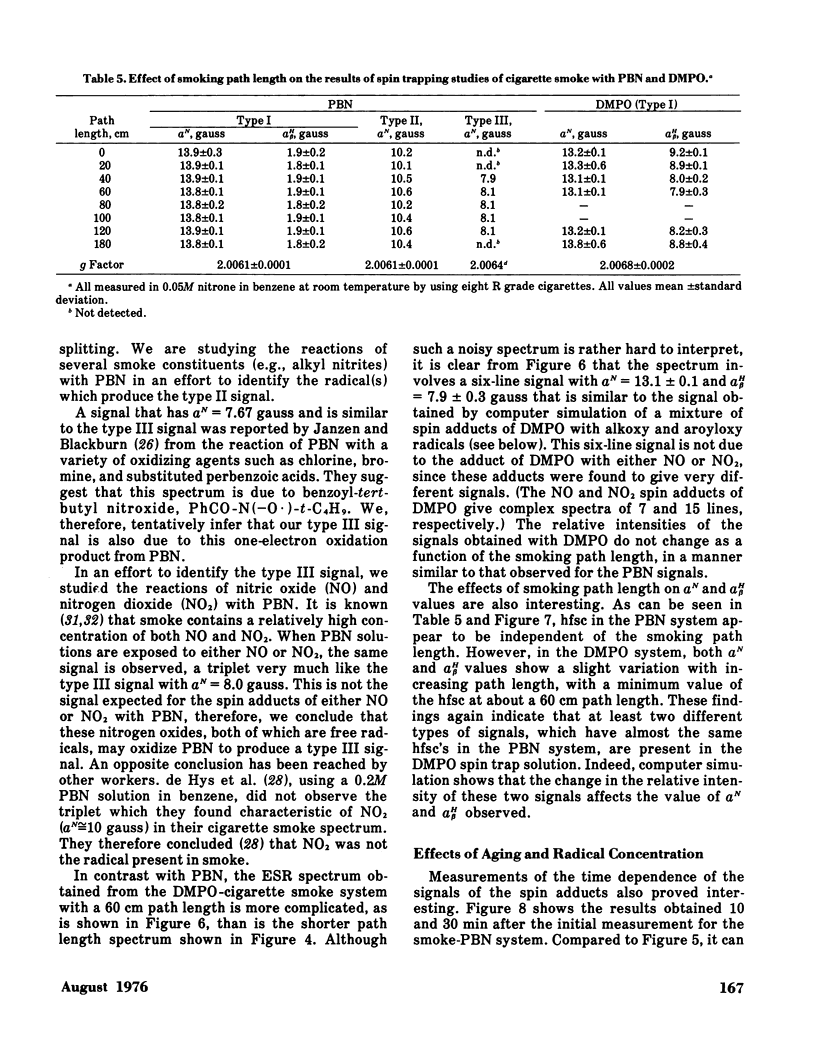
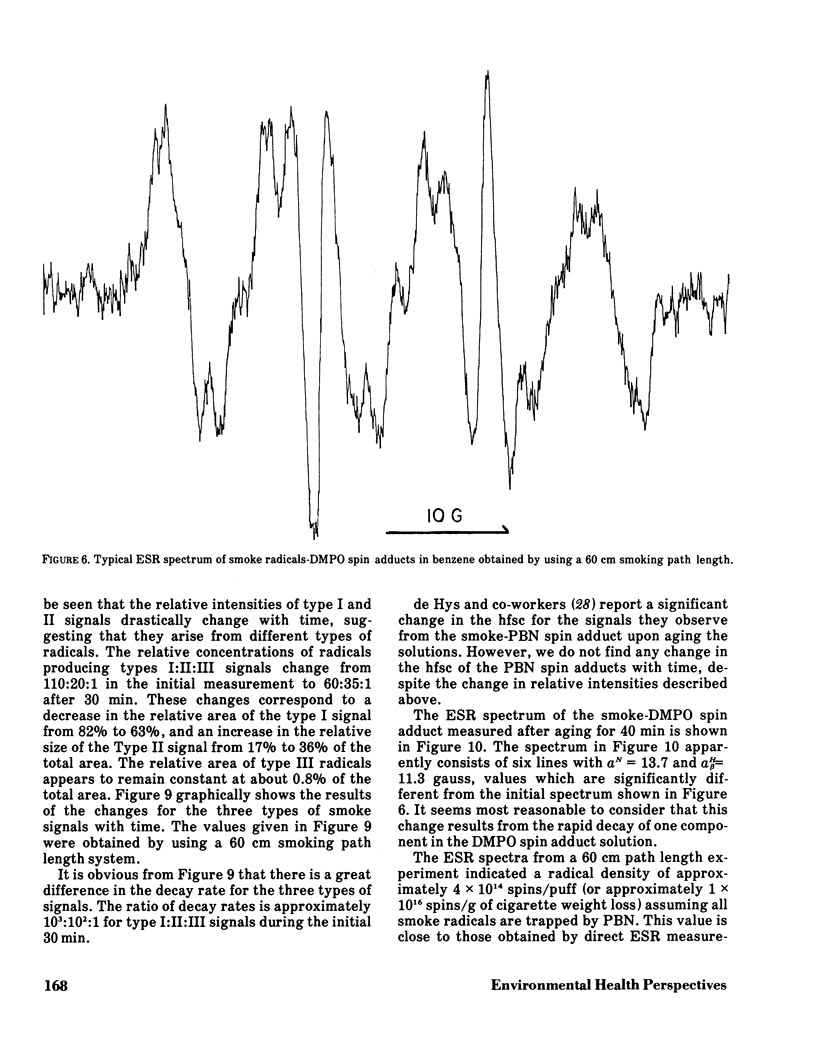
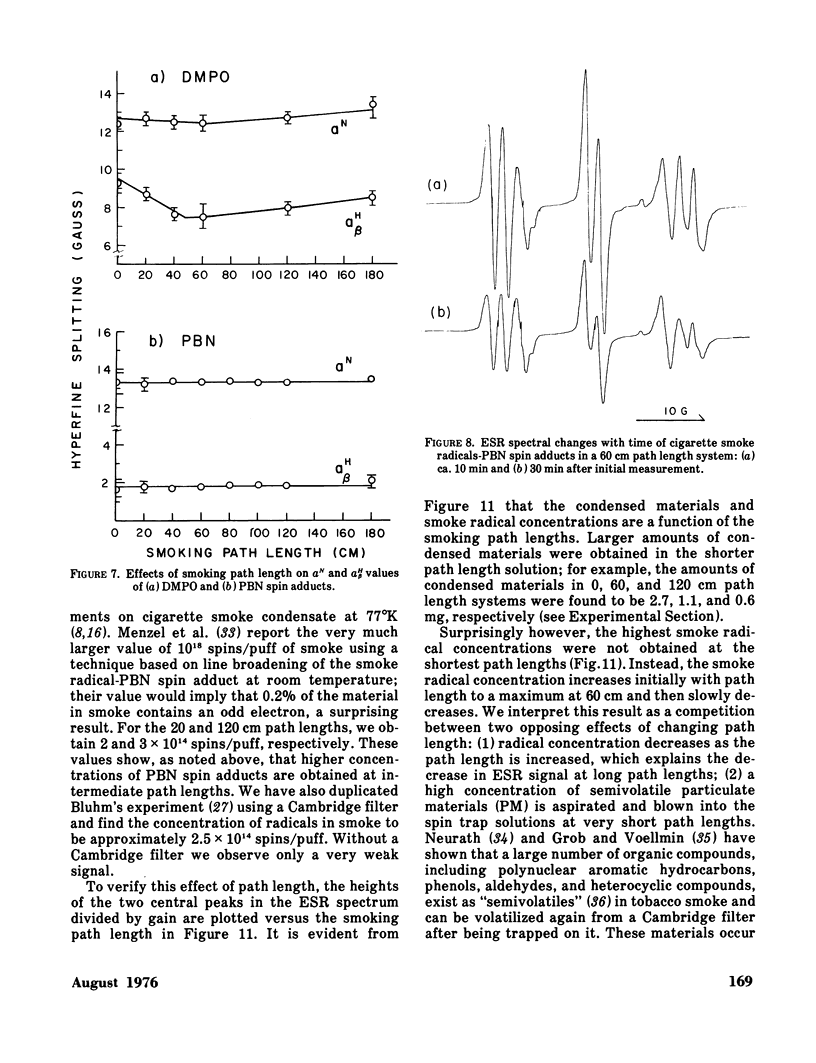
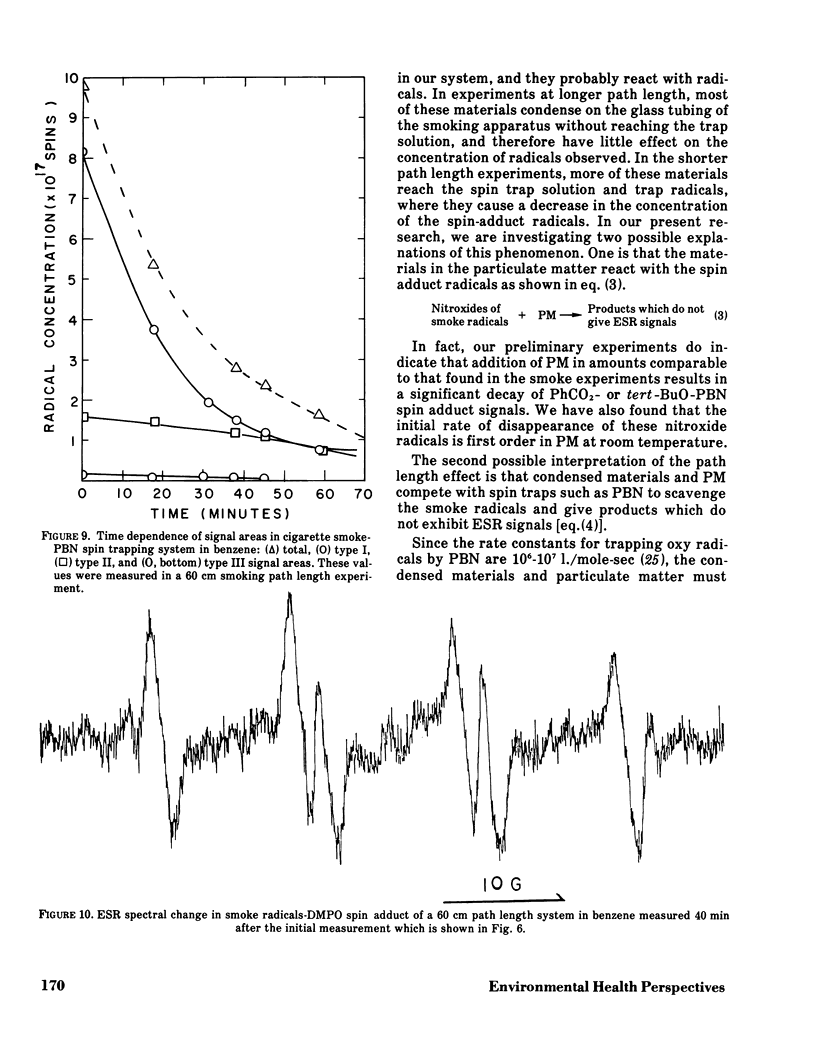
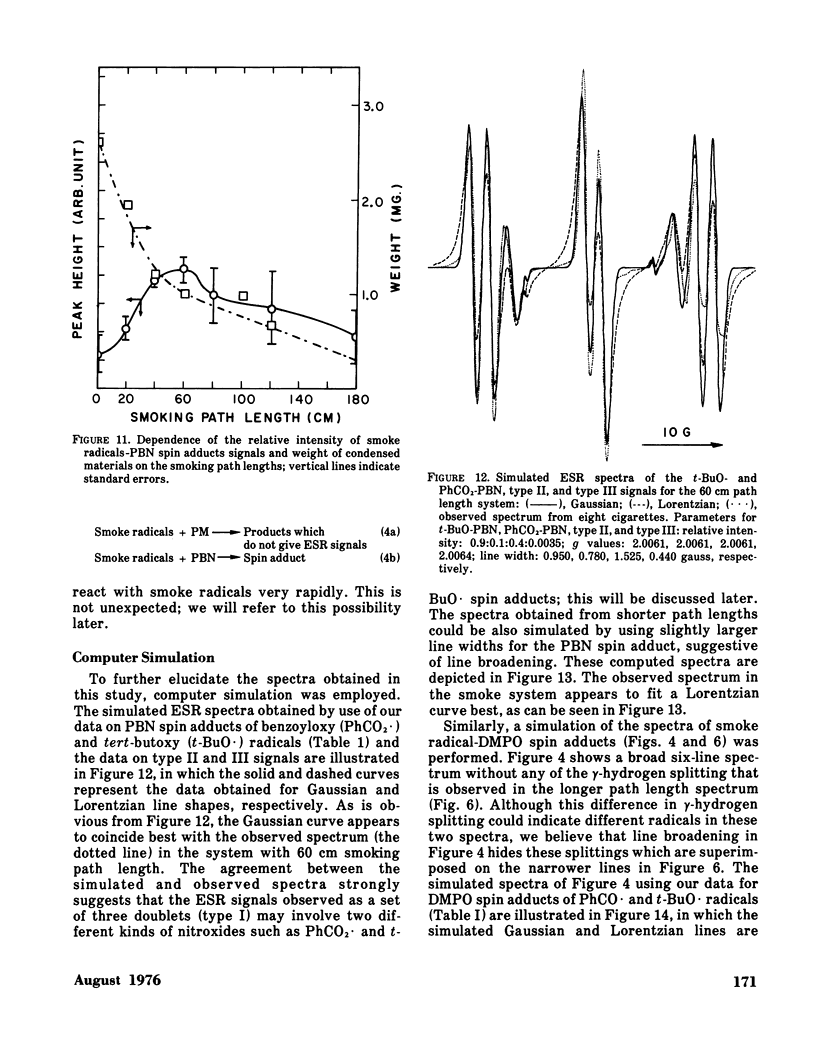
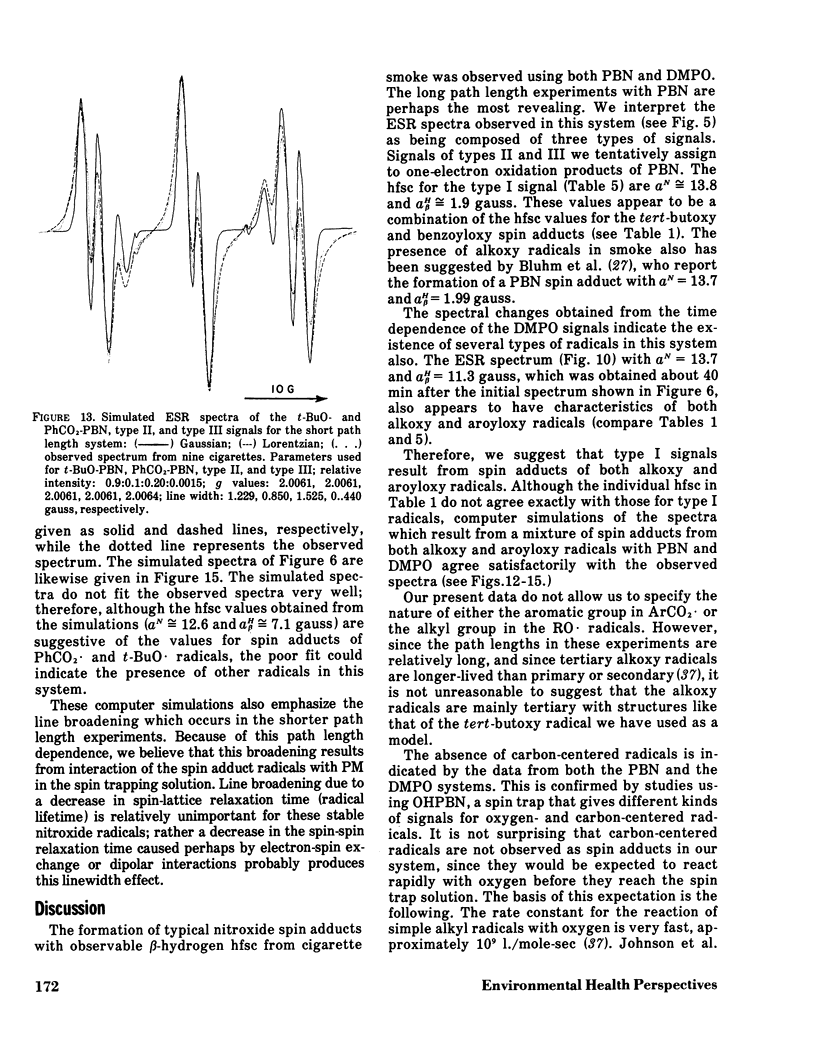
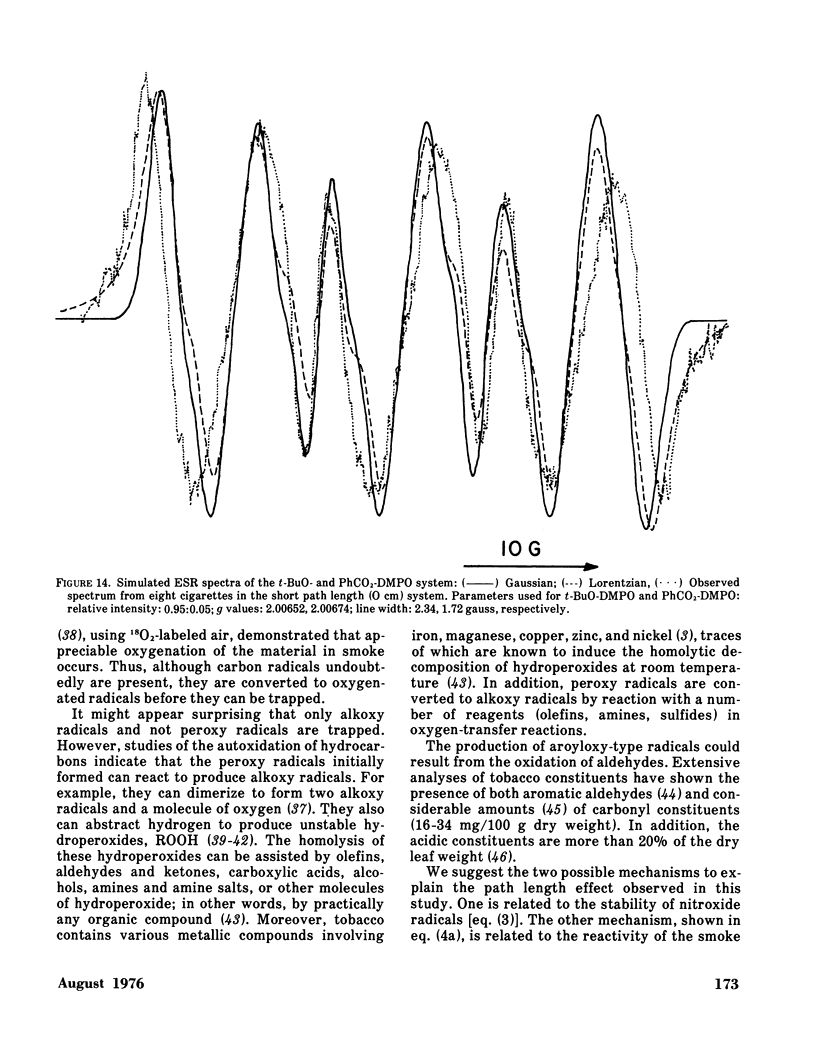
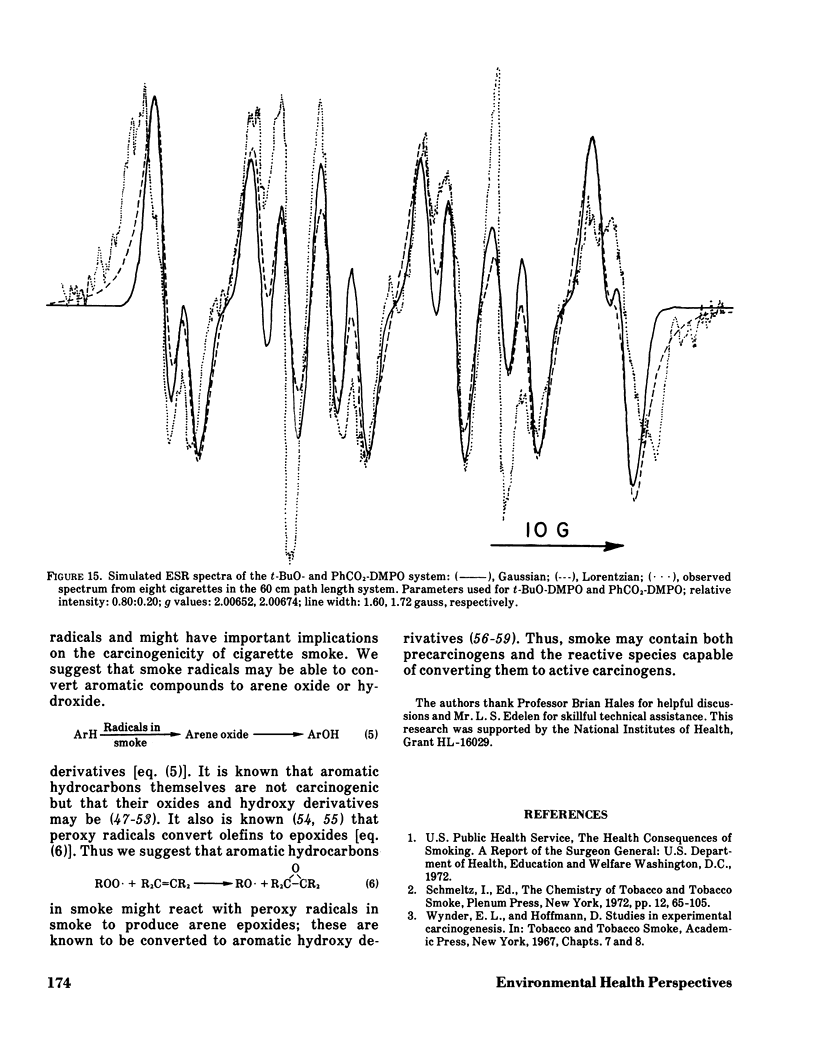
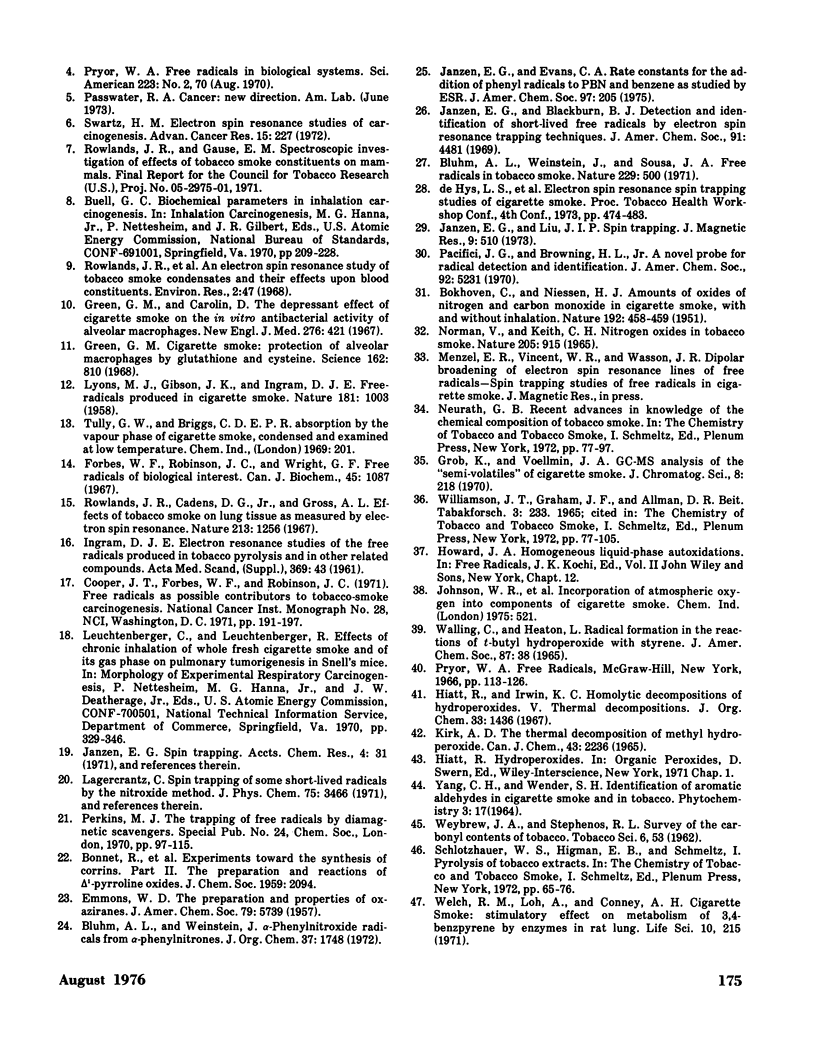
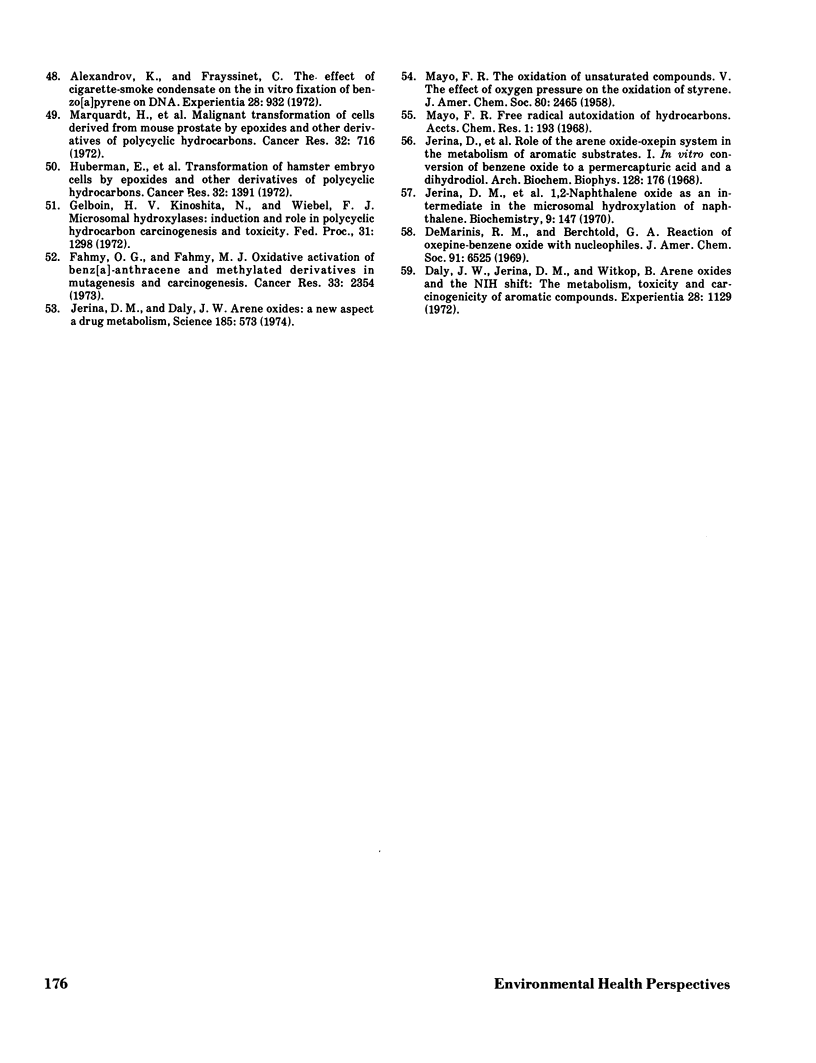
Selected References
These references are in PubMed. This may not be the complete list of references from this article.
- Alexandrov K., Frayssinet C. The effect of cigarett-smoke condensate on the in vitro fixation of benzo(a)pyrene on DNA. Experientia. 1972 Aug 15;28(8):932–933. doi: 10.1007/BF01924955. [DOI] [PubMed] [Google Scholar]
- BOKHOVEN C., NIESSEN H. J. Amounts of oxides of nitrogen and carbon monoxide in cigarette smoke, with and without inhalation. Nature. 1961 Nov 4;192:458–459. doi: 10.1038/192458a0. [DOI] [PubMed] [Google Scholar]
- Bluhm A. L., Weinstein J., Sousa J. A. Free radicals in tobacco smoke. Nature. 1971 Feb 12;229(5285):500–500. doi: 10.1038/229500a0. [DOI] [PubMed] [Google Scholar]
- Cooper J. T., Forbes W. F., Robinson J. C. Free radicals as possible contributors to tobacco-smoke carcinogenesis. Natl Cancer Inst Monogr. 1968 Jun;28:191–197. [PubMed] [Google Scholar]
- Daly J. W., Jerina D. M., Witkop B. Arene oxides and the NIH shift: the metabolism, toxicity and carcinogenicity of aromatic compounds. Experientia. 1972 Oct 15;28(10):1129–1149. doi: 10.1007/BF01946135. [DOI] [PubMed] [Google Scholar]
- Fahmy O. G., Fahmy M. J. Oxidative activation of benz(a)anthracene and methylated derivatives in mutagenesis and carcinogenesis. Cancer Res. 1973 Oct;33(10):2354–2361. [PubMed] [Google Scholar]
- Forbes W. F., Robinson J. C., Wright G. F. Free radicals of biological interest. I. Electron spin resonance spectra of tobacco smoke condensates. Can J Biochem. 1967 Jul;45(7):1087–1098. doi: 10.1139/o67-126. [DOI] [PubMed] [Google Scholar]
- Gelboin H. V., Kinoshita N., Wiebel F. J. Microsomal hydroxylases: induction and role in polycyclic hydrocarbon carcinogenesis and toxicity. Fed Proc. 1972 Jul-Aug;31(4):1298–1309. [PubMed] [Google Scholar]
- Green G. M., Carolin D. The depressant effect of cigarette smoke on the in vitro antibacterial activity of alveolar macrophages. N Engl J Med. 1967 Feb 23;276(8):421–427. doi: 10.1056/NEJM196702232760801. [DOI] [PubMed] [Google Scholar]
- Green G. M. Cigarette smoke: protection of alveolar macrophages by glutathione and cysteine. Science. 1968 Nov 15;162(3855):810–811. doi: 10.1126/science.162.3855.810. [DOI] [PubMed] [Google Scholar]
- Huberman E., Kuroki T., Marquardt H., Selkirk J. K., Heidelberger C., Grover P. L., Sims P. Transformation of hamster embryo cells by epoxides and other derivatives of polycyclic hydrocarbons. Cancer Res. 1972 Jul;32(7):1391–1396. [PubMed] [Google Scholar]
- Jerina D. M., Daly J. W. Arene oxides: a new aspect of drug metabolism. Science. 1974 Aug 16;185(4151):573–582. doi: 10.1126/science.185.4151.573. [DOI] [PubMed] [Google Scholar]
- Jerina D. M., Daly J. W., Witkop B., Zaltzman-Nirenberg P., Udenfriend S. 1,2-naphthalene oxide as an intermediate in the microsomal hydroxylation of naphthalene. Biochemistry. 1970 Jan 6;9(1):147–156. doi: 10.1021/bi00803a019. [DOI] [PubMed] [Google Scholar]
- LYONS M. J., GIBSON J. F., INGRAM D. J. Free-radicals produced in cigarette smoke. Nature. 1958 Apr 5;181(4614):1003–1004. doi: 10.1038/1811003a0. [DOI] [PubMed] [Google Scholar]
- Marquardt H., Kuroki T., Huberman E., Selkirk J. K., Heidelberger C., Grover P. L., Sims P. Malignant transformation of cells derived from mouse prostate by epoxides and other derivatives of polycyclic hydrocarbons. Cancer Res. 1972 Apr;32(4):716–720. [PubMed] [Google Scholar]
- Swartz H. M. Electron spin resonance studies of carcinogenesis. Adv Cancer Res. 1972;15:227–252. doi: 10.1016/s0065-230x(08)60376-0. [DOI] [PubMed] [Google Scholar]
- Tully G. W., Briggs C. D., Horsfield A. E.P.R. absorption by the vapour phase of cigarette smoke, condensed and examined at low temperatures. Chem Ind. 1969 Feb 15;7:201–203. [PubMed] [Google Scholar]
- Welch R. M., Loh A., Conney A. H. Cigarette smoke: stimulatory effect of metabolism of 3,4--benzpyrene by enzymes in rat lung. Life Sci I. 1971 Feb 15;10(4):215–221. doi: 10.1016/0024-3205(71)90250-5. [DOI] [PubMed] [Google Scholar]


